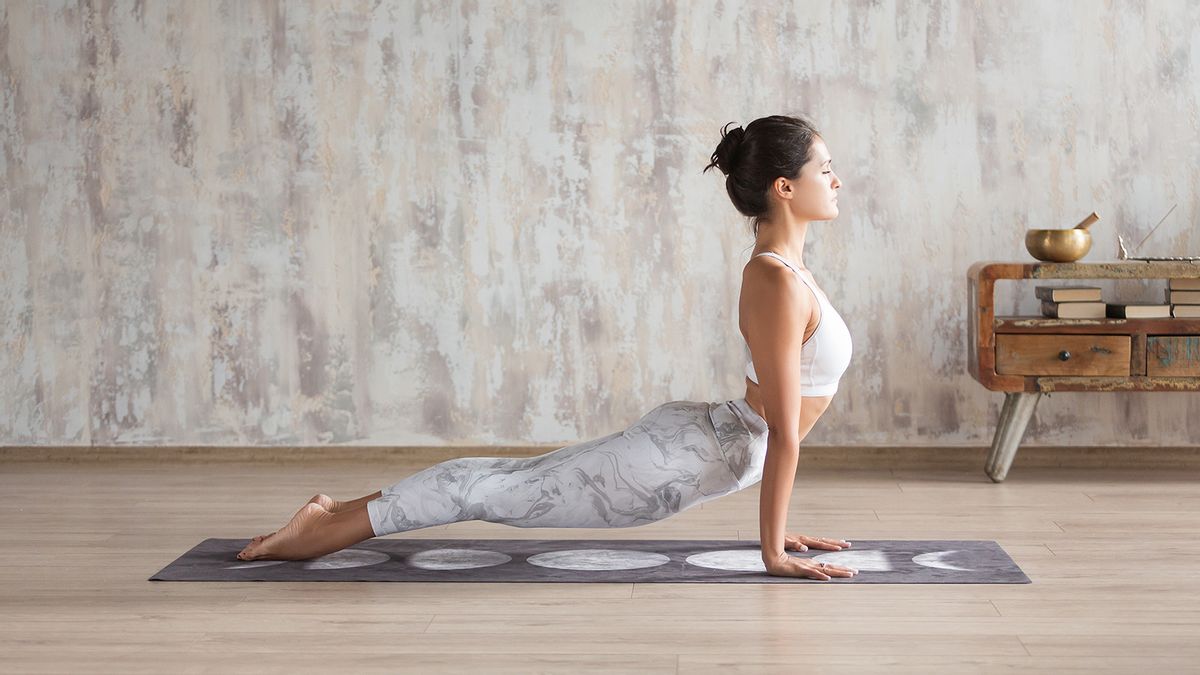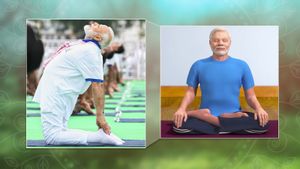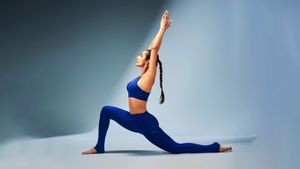We’ve all gazed at the moon at some point or the other and have memories associated with it. Remember how, as a kid, we thought it followed us everywhere? Love, companionship, tranquility, absolute stillness and, even immortality – this natural satellite symbolises different things for different people. Some even believe that its light has soothing properties. Well, they aren’t completely wrong. The moon does affect our body and mind. In fact, the idea of looking at the moon for rejuvenation has been around for nearly 500 years. It’s no wonder then that hatha yoga has a salutation dedicated to it called the Chandra Namaskar, which literally means “bow to the moon”.
Founded in the 1960s at the Bihar School of Yoga, Chandra Namaskar is a sister sequence of the Surya Namaskar, a common yoga practice, and was first published in Asana Pranayama Mudra Bandha, an internationally-recognised yoga manual. In the late 1980s, Megha Nancy Buttenheim, a faculty member of The Kripalu Centre for Yoga & Health, co-created a version of this salutation. “I wondered why so little attention in yoga was focused on the moon, as did my Kripalu Yoga teaching colleagues. Sun salutations come from the masculine historical tradition of yoga, but we wanted to make it more accessible to the scores of women who were getting more and more interested in the practice. While the sun salutation raises prana, we wanted the moon salute to recognise the downward flow of energy,” explains Buttenheim on the organisation’s official blog.
The Yin and Yang in Yoga
Think of Chandra Namaskar, which cultivates lunar energy, and Surya Namaskar, which cultivates solar energy, as the yin and yang in yoga. The moon salutation is like yin energy – cooling, receptive and meditative - whereas, sun salutation is warming and energising, like that of the yang energy. Although these namaskars represent opposite energies, they are interdependent and help find balance in your yoga practice. They are both about the movement, breath, connecting to your body and finding peace. According to yogic texts, our body is made of both heating and cooling energies and that yoga and pranayama (breathing exercises) help bring them into a balanced harmony.
Pointing out other differences between these namaskars, yoga practitioner Mihir Jogh, who teaches this ancient practice to Bollywood actor Varun Dhawan, shares, “A classic Surya Namaskar features 12 steps, which refer to the 12 zodiac signs. A classic Chandra namaskar, on the other hand, is made up of nine asanas and the sequence consists of 28 steps (14 steps for each side, right and left) that represent lunar phases. Apart from this, Surya Namaskar is done lengthwise, along the mat, and Chandra Namaskar is done sideways or laterally along your mat.” Surya Namaskar involves more of forward and backward bending, while Chandra Namaskar puts focus on the lower body and bending sideways.
The best time to practice Surya Namaskar is in the morning and Chandra Namaskar, when the moon is up and shining, adds Jogh, who is also the founder of JogaShala, a Mumbai-based yoga studio. One must practice these on an empty stomach or after at least three to four hours of a light meal.
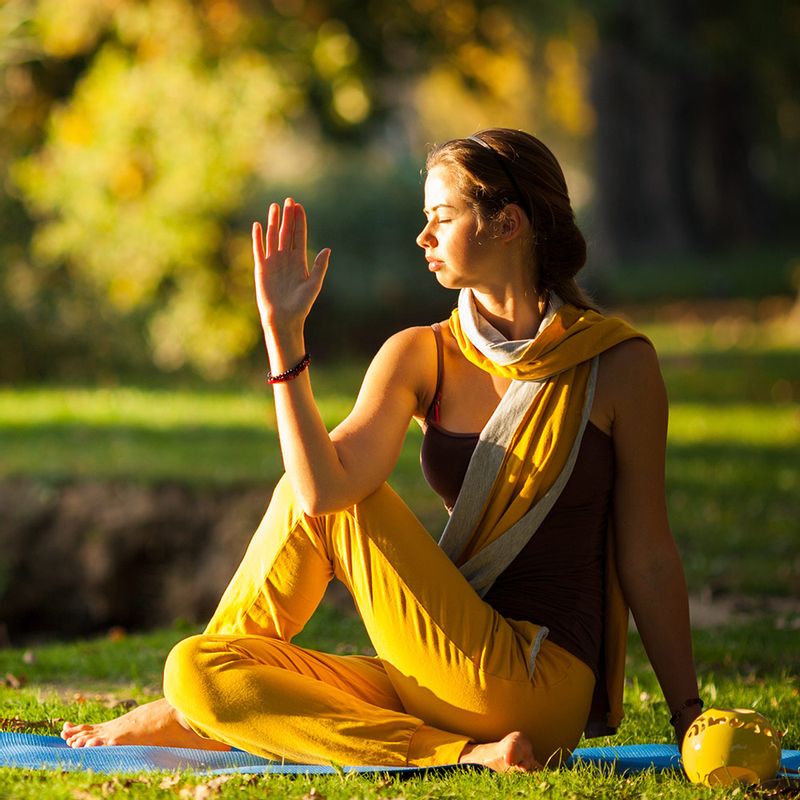
28 Steps to Relaxation
For Bengaluru-based yoga expert Anjali Verma, Chandra Namaskar is a complete system of rejuvenation for body and mind. The combination of stretches and deep breathing makes it a complete practice. It helps maintain focus, strengthens all major muscle groups, aids flexibility, tones abdomen, massages abdominal organs and boosts metabolism, Verma lists the physical benefits of this sequence in an Instagram post.
In addition to these, Chandra Namaskar provides emotional benefits and is known to enhance creative energy. Its calming properties, which basically balance one’s emotions, are known to help people cope with stress and anxiety. Verma suggests practicing three to ten rounds of this namaskar initially – under expert supervision, of course -- and gradually increasing the number every week.
Jogh shares that this can be practiced by one and all, regardless of age, body type and condition. “In fact, if someone is facing difficulty to perform Chandra Namaskar, there are variations that can be practiced with the use of a prop such as a chair. Despite these many physical and mental health benefits, why isn’t Chandra Namaskar as popular as the Surya Namaskar? Ask Jogh this and he promptly says that there’s a consumerism angle at play here. “People today want to sweat it out and get fit. It’s a consumeristic society and the same attitude has unfortunately trickled into yoga and diluted the essence of the practice. Chandra Namaskar involves various squatting asanas, which people perceive as difficult because we don’t do it often. Also, I feel that teachers avoid teaching it because it’s difficult for everyone to adjust and can’t be taught in a flow like Surya Namaskar. With Chandra namaskar, you must go slow. That’s where the consumerism angle comes. Think: If it’s an hour-long class and the teacher knows that people are there to sweat it out or expect a certain result, then they give in and end up only teaching Surya Namaskar.”
Step-by-step Guide to Chandra Namaskar
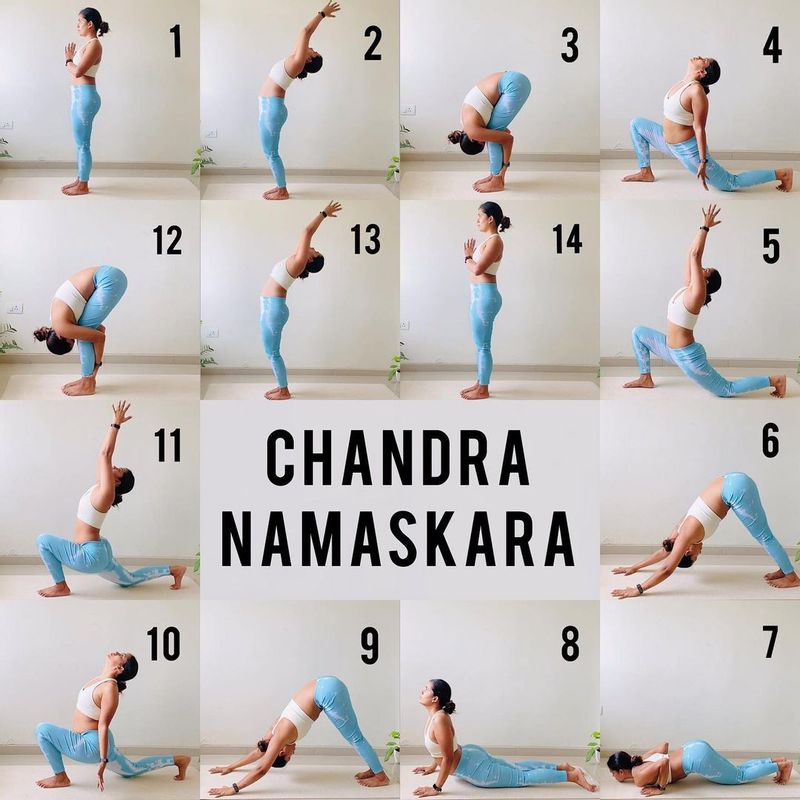
There are many variations of Chandra Namaskar, but it is generally practiced laterally and once on each side, right and left. In Verma’s version of Chandra Namaskar, the sequence of most poses is the same as the classic Surya Namaskar and this too involves deep breathing. However, the pace and intention change. The moon salutation is performed slowly. Below is the sequence of the asanas:
1. Pranam asana (The Prayer pose)
2. Hastha Utanasana (Raised arms pose)
3. Padahastasana (Standing forward bend)
4. Ashwa Sanchalanasana (Equestrian pose)
5. Inhale and bend back (Ardha Chandra asana)
6. Santholanasana (Plank pose)
7. Ashtanga Namaskar Asana (Eight-limbed salutation)
8. Bhujangasana (Cobra pose)
9. AdhoMukha Svanasana (Downward dog pose)
10. Ashwa Sanchalanasana (Equestrian pose)
11. Inhale and bend back (Ardha Chandra asana)
12. Padahastasana (Standing forward bend)
13. Hastha Utanasana
14. Pranam asana
Repeat the 14 steps with the Right leg to make it one complete cycle with a total of 28 counts.


